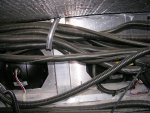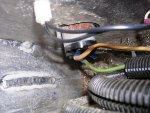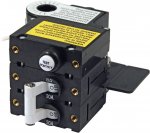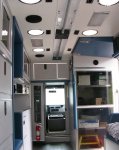rlrenz
Explorer
I've also been wondering where I could hang a fire extinguisher inside the module - the photos show 4 screws on the door of the cabinet that match up with the screw holes on a fire extinguisher bracket I have, but this would be a real bump hazard. Right now, it looks like I'll have room to hang one on the bottom of the cabinet, just below the electrical panel.
MNtal stopped by last night, and we spent a few hours waving our hands in the air about ambulance builds. I've been trying to figure out where to carry a spare tire, and how to build a bed without destroying a lot of interior storage. We figured out that I have a rear cabinet that can be used for a quick solution to tire storage (4 bolts to remove a shelf), and that building a fold out couch for the rear of the module could solve both bed space, and allow storage for a spare tire under the couch. I wonder if the RV folks make something like that already (but probably without tire storage capability)? I could either build the frame from baltic birch / marine plywood, or weld it from aluminum.
Tune in tomorrow...
MNtal stopped by last night, and we spent a few hours waving our hands in the air about ambulance builds. I've been trying to figure out where to carry a spare tire, and how to build a bed without destroying a lot of interior storage. We figured out that I have a rear cabinet that can be used for a quick solution to tire storage (4 bolts to remove a shelf), and that building a fold out couch for the rear of the module could solve both bed space, and allow storage for a spare tire under the couch. I wonder if the RV folks make something like that already (but probably without tire storage capability)? I could either build the frame from baltic birch / marine plywood, or weld it from aluminum.
Tune in tomorrow...











